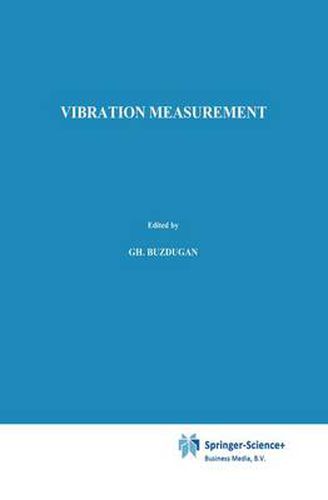Readings Newsletter
Become a Readings Member to make your shopping experience even easier.
Sign in or sign up for free!
You’re not far away from qualifying for FREE standard shipping within Australia
You’ve qualified for FREE standard shipping within Australia
The cart is loading…






This title is printed to order. This book may have been self-published. If so, we cannot guarantee the quality of the content. In the main most books will have gone through the editing process however some may not. We therefore suggest that you be aware of this before ordering this book. If in doubt check either the author or publisher’s details as we are unable to accept any returns unless they are faulty. Please contact us if you have any questions.
Nowadays, the engineering practice raises far more vibration problems than can be theoretically explained or modelled. Because Df this, measurements are used in almost all fields of industry, transportation and civil engineering in studies of mechanical and structural vibration. They are an invaluable tool for designing products and machines with high reliability and low noise level, vehicles and buildings with improved comfort and resistance to dynamic loads, as well as for obtaining increased safety of opera tion and optimum running parameters. In order to cope with the increasing demand for experimental measurement of vibration characteristics, young engineers and designers need an introductory book with emphasis on what has to be measured and by what means before learning how measurements are done . The expertise to perform vibration measurements must be gained in time, with every new investi gation and studied problem . .A detailed presentation of instrumentation and measuring techniques is beyond the aim of this book. Such information can be found in product data sheets, application manuals and hand books supplied by equipment manufacturers. Only general princi ples and widely used methods are presented herein, in order to provide the reader with an overview of the instrumentation and techniques encountered in vibration measurement.
$9.00 standard shipping within Australia
FREE standard shipping within Australia for orders over $100.00
Express & International shipping calculated at checkout
This title is printed to order. This book may have been self-published. If so, we cannot guarantee the quality of the content. In the main most books will have gone through the editing process however some may not. We therefore suggest that you be aware of this before ordering this book. If in doubt check either the author or publisher’s details as we are unable to accept any returns unless they are faulty. Please contact us if you have any questions.
Nowadays, the engineering practice raises far more vibration problems than can be theoretically explained or modelled. Because Df this, measurements are used in almost all fields of industry, transportation and civil engineering in studies of mechanical and structural vibration. They are an invaluable tool for designing products and machines with high reliability and low noise level, vehicles and buildings with improved comfort and resistance to dynamic loads, as well as for obtaining increased safety of opera tion and optimum running parameters. In order to cope with the increasing demand for experimental measurement of vibration characteristics, young engineers and designers need an introductory book with emphasis on what has to be measured and by what means before learning how measurements are done . The expertise to perform vibration measurements must be gained in time, with every new investi gation and studied problem . .A detailed presentation of instrumentation and measuring techniques is beyond the aim of this book. Such information can be found in product data sheets, application manuals and hand books supplied by equipment manufacturers. Only general princi ples and widely used methods are presented herein, in order to provide the reader with an overview of the instrumentation and techniques encountered in vibration measurement.